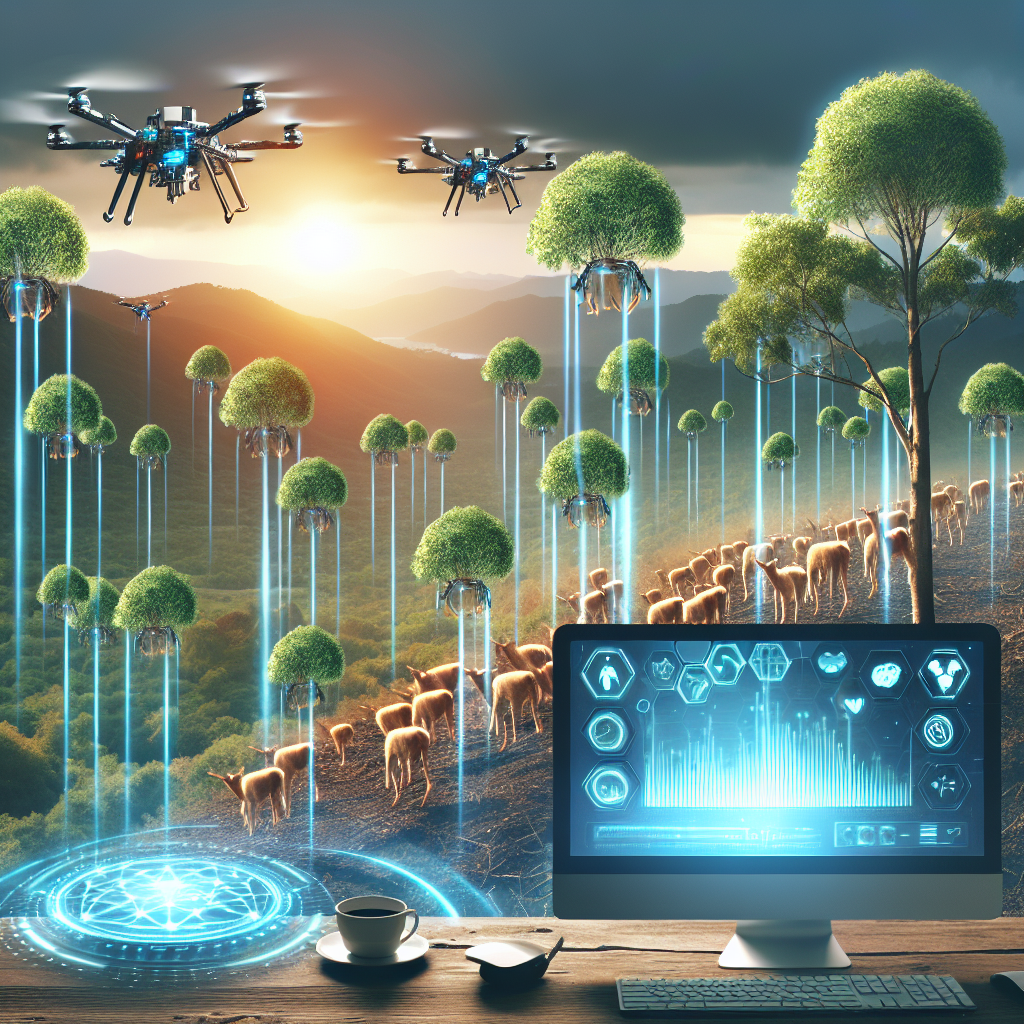The Role of AI Software in Wildlife Conservation
Wildlife conservation is a critical issue facing our planet today. With increasing threats such as habitat loss, poaching, and climate change, many species are facing the risk of extinction. In order to effectively protect and preserve wildlife, conservationists are turning to advanced technologies such as artificial intelligence (AI) software to aid in their efforts.
AI software has the potential to revolutionize the field of wildlife conservation by providing innovative solutions to complex challenges. From monitoring and tracking endangered species to analyzing vast amounts of data, AI software is helping conservationists make more informed decisions and take action to protect wildlife.
One of the key roles of AI software in wildlife conservation is in monitoring and tracking endangered species. With the use of drones, satellite imaging, and camera traps, AI software can help conservationists survey and monitor wildlife populations in remote and hard-to-reach areas. This technology allows conservationists to gather valuable data on the population sizes, behaviors, and movements of endangered species, which can inform conservation efforts and help protect these species from threats.
In addition, AI software is being used to analyze vast amounts of data collected from various sources, such as field surveys, camera traps, and satellite imaging. By using machine learning algorithms, AI software can process and analyze this data to identify patterns, trends, and anomalies that may indicate changes in wildlife populations or habitats. This information can be used to guide conservation strategies, such as identifying key habitats for protection or monitoring the impact of conservation interventions.
Furthermore, AI software is being used to develop predictive models that can forecast the impact of climate change on wildlife populations. By analyzing historical data and environmental variables, AI software can predict how changes in temperature, precipitation, and habitat loss may affect the distribution and abundance of species. This information can help conservationists prioritize conservation efforts and develop strategies to mitigate the impact of climate change on wildlife.
Overall, AI software is playing a crucial role in wildlife conservation by providing innovative tools and solutions to help protect and preserve endangered species. By leveraging the power of artificial intelligence, conservationists can make more informed decisions, monitor wildlife populations more effectively, and develop strategies to address the complex challenges facing wildlife today.
FAQs:
1. How does AI software help in monitoring and tracking endangered species?
AI software helps in monitoring and tracking endangered species by using drones, satellite imaging, and camera traps to survey wildlife populations in remote and hard-to-reach areas. By analyzing the data collected from these sources, AI software can provide valuable information on the population sizes, behaviors, and movements of endangered species, which can inform conservation efforts.
2. How is AI software used to analyze data in wildlife conservation?
AI software is used to analyze vast amounts of data collected from various sources, such as field surveys, camera traps, and satellite imaging. By using machine learning algorithms, AI software can process and analyze this data to identify patterns, trends, and anomalies that may indicate changes in wildlife populations or habitats. This information can be used to guide conservation strategies and protect endangered species.
3. How does AI software help in developing predictive models for wildlife conservation?
AI software helps in developing predictive models for wildlife conservation by analyzing historical data and environmental variables to forecast the impact of climate change on wildlife populations. By identifying patterns and trends in the data, AI software can predict how changes in temperature, precipitation, and habitat loss may affect the distribution and abundance of species. This information can help conservationists prioritize conservation efforts and develop strategies to mitigate the impact of climate change on wildlife.
4. What are some examples of AI software being used in wildlife conservation?
Some examples of AI software being used in wildlife conservation include Wildbook, a platform that uses AI to identify individual animals from photos and track their movements; Instant Wild, an app that uses AI to analyze camera trap images and identify species; and EarthRanger, a software platform that uses AI to monitor and track wildlife populations in real-time.
5. What are the benefits of using AI software in wildlife conservation?
The benefits of using AI software in wildlife conservation include improved monitoring and tracking of endangered species, more effective analysis of data, the development of predictive models for forecasting the impact of climate change, and the ability to make more informed decisions and take action to protect and preserve wildlife populations. AI software helps conservationists leverage advanced technologies to address the complex challenges facing wildlife today and develop innovative solutions for conservation efforts.

